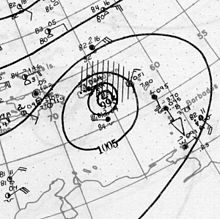Written by the TreasureGuide for the exclusive use of the Treasure Beaches Report.
A small jug discovered in the Israeli capital's Jewish Quarter last month turns out to contain four gold coins — the equivalent of four month's salary for a common laborer at the time the coins were tucked away more than 1,000 years ago.
Archaeologists discovered the hidden loot while surveying a site prior to the construction of an elevator to the Western Wall Plaza, a historic public square in Jerusalem's Old City....
Here is the link for more about that.
Ancient gold stash found in jug in Jerusalem | Live Science
---
 |
| Bottle Embossed: THE CHATANOOGA MEDICINE CO |
I haven't post any bottles for a while, but here is a Treasure Coast found light green bottle, embossed as shown below the photos. It has a good story behind it.
 |
| Other Side of Same Bottle Embossed: McELREE'S CARDUI. |
When the Civil War ended, two Federal soldiers, Z. C. Patten and T. H. Payne, were mustered out of the army in Chattanooga. They formed a partnership for selling paper, blankbooks and miscellaneous stationery supplies. Business in Chattanooga was in a disorderly state because of the chaos caused by the war, and the rapid surge forward of business reorganization...
Patten, however, gave rein to his expansive ideas and bought the formulas of Thedford’s Black Draught and McElree’s Wine of Cardui, and organized the Chattanooga Medicine Company for large-scale production of these medicines...
Of Wine of Cardui, a newspaper ad said, ‘This pure wine is a simple vegetable extract without intoxicating qualities, and has proved to be the most astonishing TONIC FOR WOMEN known to medical science.”
Twenty years later when Samuel Hopkins Adams published his “Great American Fraud” articles, he mentioned the advertising of the Chattanooga Medicine Company as not being suitable reading material for a family gathered around the breakfast table...
Here is a link to an article that provides a lot of additional information.
Black Draught and Wine of Cardui - Appalachian History
Below is an older bottle and box containing the Chattanooga Medicine Company tonic.
 Surface weather analysis of the storm nearing Puerto Rico as a Category 5 hurricane on September 13 | |
| Meteorological history | |
|---|---|
| Formed | September 6, 1928 |
| Dissipated | September 21, 1928 |
| Category 5 major hurricane | |
| 1-minute sustained (SSHWS/NWS) | |
| Highest winds | 160 mph (260 km/h) |
| Lowest pressure | ≤929 mbar (hPa); ≤27.43 inHg |
| Overall effects | |
| Fatalities | 4,112+ |
| Damage | $100 million (1928 USD) ($1.77 billion in 2018) |
| Areas affected | West Africa, Cape Verde, Lesser Antilles, Guadeloupe, Virgin Islands, Puerto Rico, The Bahamas, Florida, Georgia, East Coast of the United States, Northeastern United States, Eastern Canada |
| IBTrACS | |
Part of the 1928 Atlantic hurricane season | |
The Okeechobee hurricane of 1928, also known as the San Felipe Segundo hurricane, was one of the deadliest hurricanes in the recorded history of the North Atlantic basin, and the fourth deadliest hurricane in the United States, only behind the 1900 Galveston hurricane, 1899 San Ciriaco hurricane, and Hurricane Maria. The hurricane killed an estimated 2,500 people in the United States; most of the fatalities occurred in the state of Florida, particularly in Lake Okeechobee. It was the fourth tropical cyclone, third hurricane, the only major hurricane of the 1928 Atlantic hurricane season, and remains the deadliest disaster in Florida’s history to date.[1] It developed off the west coast of Africa on September 6 as a tropical depression, but it strengthened into a tropical storm later that day, shortly before passing south of the Cape Verde islands. Further intensification was slow and halted late on September 7. About 48 hours later, the storm strengthened and became a Category 1 hurricane on the Saffir–Simpson hurricane wind scale. Still moving westward, the system reached Category 4 intensity before striking Guadeloupe on September 12, where it brought great destruction and resulted in 1,200 deaths. The islands of Martinique, Montserrat, and Nevis also reported damage and fatalities, but not nearly as severe as in Guadeloupe.
Around midday on September 13, the storm strengthened into a Category 5 hurricane and peaked with sustained winds of 160 mph (260 km/h). About six hours later, the system made landfall in Puerto Rico; it remains the only tropical cyclone on record to strike the island at Category 5 intensity. Very strong winds resulted in severe damage in Puerto Rico; 24,728 homes were destroyed and 192,444 were damaged throughout the island, leaving over 500,000 people homeless. Heavy rainfall also led to extreme damage to vegetation and agriculture. On Puerto Rico alone, there were 312 deaths and about US$50 million ($887 million today) in damage. While crossing the island and emerging into the Atlantic, the storm weakened slightly, falling to Category 4 intensity. It began crossing through the Bahamas on September 16, where it resulted in 18 fatalities.
The storm made landfall near West Palm Beach, Florida, early on September 17, with winds of 145 mph (233 km/h). In the city, more than 1,711 homes were destroyed; the effects were most severe around Lake Okeechobee. The storm surge caused water to pour out of the southern edge of the lake, flooding hundreds of square miles to depths as great as 20 feet (6.1 m). Numerous houses and buildings were swept away in the cities of Belle Glade, Canal Point, Chosen, Pahokee, and South Bay, Florida. At least 2,500 people drowned, while damage was estimated at $25 million ($444 million today).
 |
| Source: Surfguru.com |


